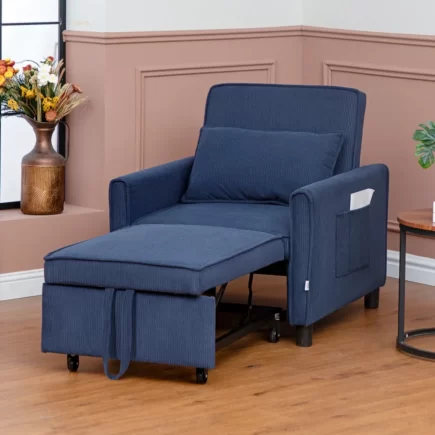When it comes to preserving the longevity of your mattress, proper storage is just as important as choosing the right one. Improper storage can lead to various forms of damage, such as sagging, mold, and unpleasant odors. Whether you’re moving, renovating, or simply trying to store a mattress for a while, taking the necessary steps to store it correctly will ensure that it remains in good condition and ready for use when needed.

Step-by-Step Process for Storing a Mattress
1. Clean the Mattress Thoroughly
Before placing your mattress in storage, it’s crucial to clean it. Dust, dirt, allergens, and any stains can settle into the mattress and cause damage over time. Here’s how to clean it:
- Vacuum: Use an upholstery attachment to vacuum the entire surface, ensuring you reach all crevices and edges. This removes dust mites, dirt, and allergens that could otherwise accumulate and degrade the mattress.
- Spot Clean Stains: If there are any visible stains, spot clean them with a mild detergent solution. Make sure to use a cleaner designed for mattresses or a non-toxic, gentle detergent. Avoid soaking the fabric, as excessive moisture can cause mold growth.
2. Choose a Clean, Dry Location
The environment where you store your mattress is critical to its preservation. The best places to store a mattress are:
- Avoid Attics, Basements, and Garages: These areas are often more prone to temperature fluctuations and dampness, both of which can cause problems for a mattress.
- A Clean, Dry Room: Opt for an indoor location that’s dry and free from moisture. A bedroom or closet works well as long as the humidity levels are kept low.

3. Use a Mattress Protector
Even if your mattress appears clean, it’s a good idea to invest in a mattress protector. A protector shields the mattress from dust, moisture, and physical damage. There are several types of mattress protectors available, including:
- Breathable Protectors: These protectors allow air circulation, preventing your mattress from becoming too hot or damp during storage.
- Waterproof Protectors: These are ideal for preventing any accidental spills or moisture that could lead to mold and mildew.
Using a mattress protector ensures that your mattress stays safe while in storage, preserving its quality for when you need it next.
4. Lift the Mattress Carefully
When you’re moving or storing the mattress, it’s important to lift it by the edges. This helps distribute the weight evenly and prevents damage to the foam or internal components. If your mattress is too heavy, consider using equipment like a dolly or asking for help. Lifting it carefully reduces the risk of compressing or damaging the structure.
5. Avoid Storing It on the Floor
Storing your mattress directly on the floor is not recommended. Doing so increases the likelihood of moisture accumulation and attracts pests such as rodents and insects. Instead, elevate the mattress by placing it on a raised platform, pallet, or clean surface. This prevents it from touching the floor and allows air circulation to keep the mattress dry.

6. Store the Mattress Upright (If Possible)
If you have limited space, storing your mattress upright is often the best option. Standing the mattress against a wall prevents pressure from building up on the internal structure, helping maintain its shape. However, ensure the mattress is positioned securely to prevent it from tipping over or leaning at an unstable angle. A mattress stored upright should be positioned so that it doesn’t fall or get damaged.
7. Protect from Pests and Critters
If you’re storing the mattress in a less-than-ideal environment, protecting it from pests is crucial. Consider using mothballs, cedar chips, or other non-toxic pest control methods around the storage area. These will help prevent insects, rodents, and other critters from causing damage to the mattress.
8. Avoid Folding or Bending the Mattress
Although it may be tempting to fold or bend your mattress to save space, this can cause permanent damage to its structure. Folding a mattress, especially if it’s made of memory foam or innerspring coils, can break the internal components and lead to long-term sagging or uneven support.
9. Monitor the Mattress During Storage
Although your mattress may be safely stored, it’s a good idea to check on it periodically. Look for signs of moisture or any visible changes in the mattress’s structure. This is especially important if you are storing the mattress for several months. By checking on it occasionally, you can catch any problems before they become too serious.
10. Store in a Climate-Controlled Environment
For high-quality mattresses, such as memory foam or latex, it’s best to store them in a climate-controlled environment. Extreme temperatures, whether hot or cold, can affect the materials in the mattress, leading to structural damage or a loss of comfort. If possible, store your mattress in a temperature-regulated space to avoid long-term damage.

Protect Your Mattress for Longevity and Comfort
Proper Mattress storage is essential for maintaining its longevity and comfort. By following the steps outlined in this guide, you can protect your mattress from damage caused by moisture, pests, and poor handling. Whether you’re storing it for a few weeks or several months, taking the time to clean, protect, and store your mattress correctly will ensure that it remains in top condition. In the long run, proper storage can save you money by extending the lifespan of your mattress, allowing you to enjoy it for years to come.
FAQs
1. What should I do if my mattress starts to smell during storage?
If your mattress develops an odor while in storage, it could be due to moisture or mold. Take it out of the storage area, let it air out in a dry space, and use a fabric freshener or a baking soda treatment to neutralize the smell.
2. Can I store my mattress in a plastic bag?
Storing your mattress in a plastic bag may trap moisture, leading to mold growth. It’s better to use breathable covers like mattress protectors, which prevent dust while allowing air circulation to keep it fresh.
3. What should I do if my mattress gets damaged while in storage?
If your mattress becomes damaged, such as with visible dents or tears, contact the manufacturer for warranty or repair options. Regular checks during storage can help identify issues early and minimize long-term damage.





























